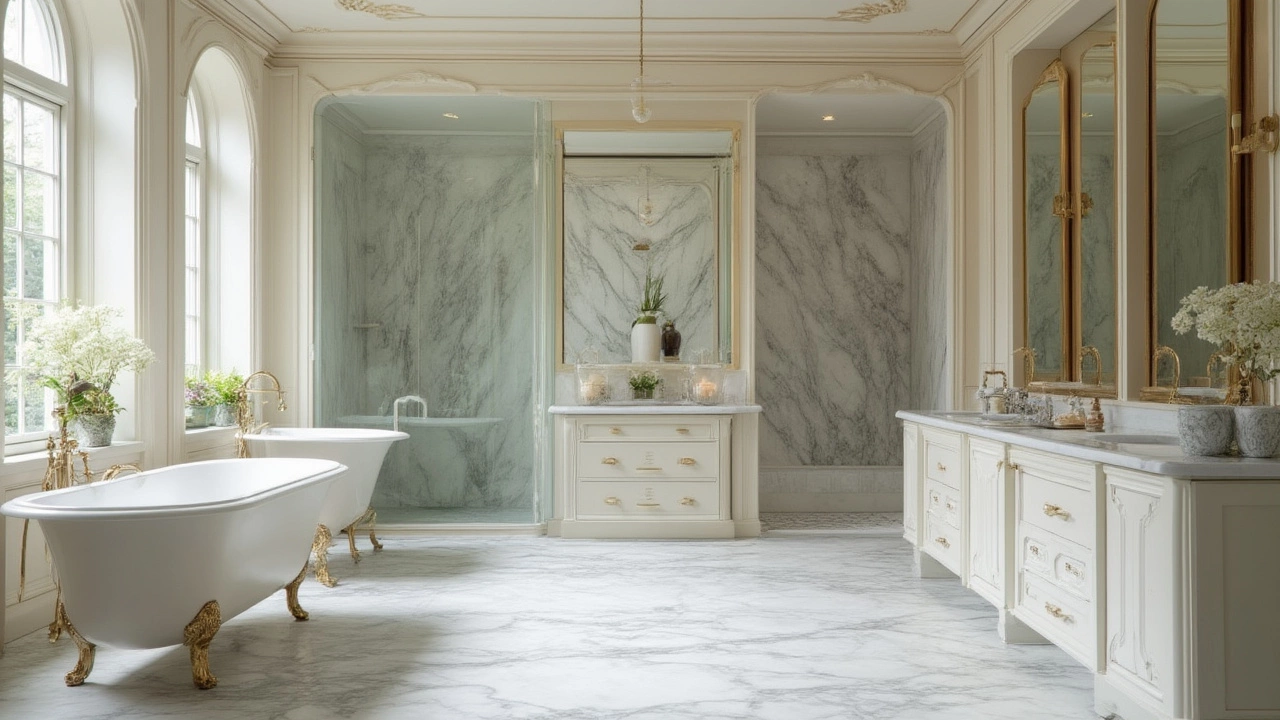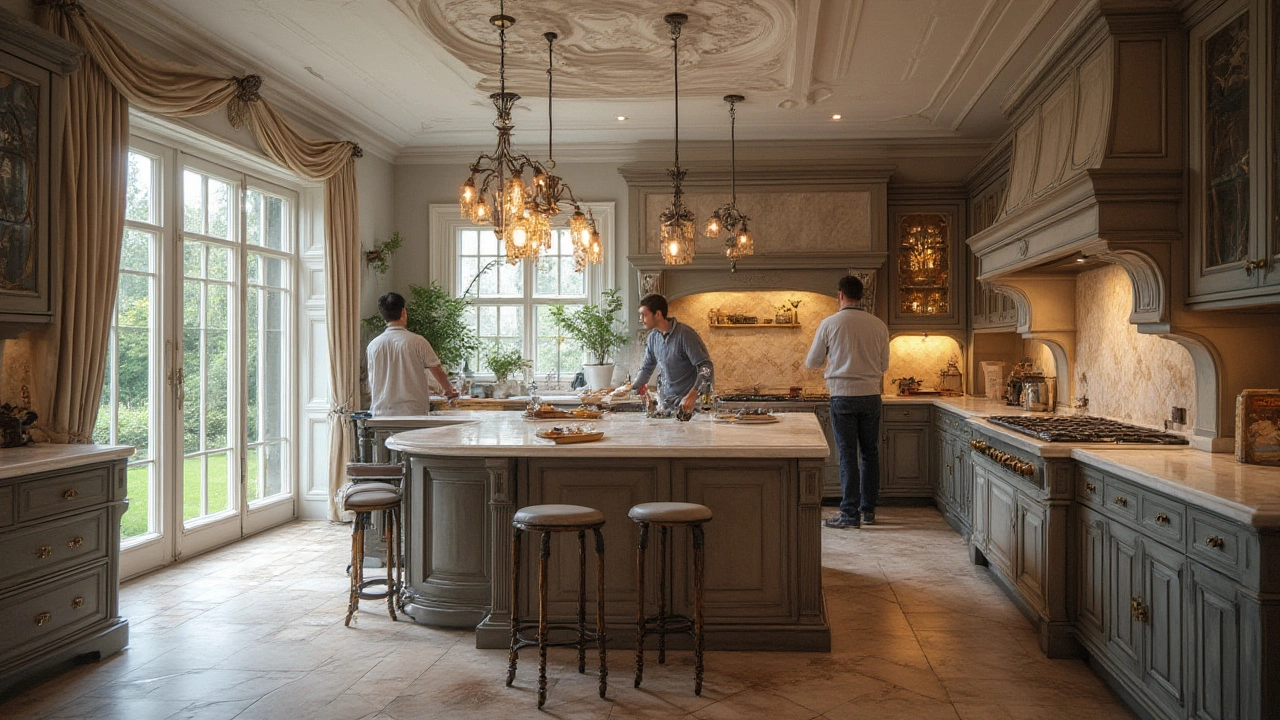Homeowners love dreaming up renovations—until the quotes come in. Some spaces eat up your budget like a ravenous wolf, leaving you with sticker shock. Not every renovation is created equal, and some don’t just creep up in cost—they leap. You might think that putting in granite counters or fancy tiles is pricey, but that’s only scratching the surface. Let’s peel back the layers and see what renovations actually burn the deepest hole in your pocket.
The Kitchen: A Money-Hungry Heart of the Home
This place isn’t called the heart of the house for nothing. Kitchens are where you cook, hang out, and drop your bags after work. But when it comes to renovation bills, the kitchen is notorious for something else: being the most expensive room to overhaul. The 2024 Remodeling Magazine Cost vs. Value report found that a midrange major kitchen remodel averages $77,000 in the U.S., while upscale projects can hit $150,000 or more.
So why does the kitchen eat your wallet alive? Think about it: cabinets, fancy countertops, maybe an island as big as a Smart car, and appliances that cost more than your first vehicle. Even modest kitchens sneak in hidden costs—wiring for extra outlets, plumbing for that snazzy deep sink, venting for a pro-level stove. And those little upgrades (soft-close drawers, custom pull-outs, smart lighting) add up shockingly fast. Each tradesperson—plumber, electrician, tile setter—bills by the hour.
If your house has an awkward kitchen layout, you might need to knock down a wall or move plumbing, jumping your costs by thousands. People often overlook ventilation and gas lines, which can be both invasive and expensive to reroute. Don’t underestimate the labor costs either—installing cabinetry is like a complicated puzzle that a pro can’t rush. The National Kitchen & Bath Association notes, “Over 40% of a kitchen’s renovation cost often goes directly to labor and installation”—more if you’re in a pricey metro.
Some tips? Keep your current layout if it works. Go for good-quality but not high-end appliances unless that’s your thing. Updating only fronts of cabinets rather than gutting everything can literally save you $10k or more. Shopping last year’s appliance models can trim thousands from your budget. If you play it smart, you’ll still wind up with a beautiful kitchen—without a side of financial heartburn.
Bathrooms: Glamour and Grit Collide
You’d think that a small space means smaller bills. Not for a bathroom. The square footage might be tiny, but the cost per foot can rival luxury kitchens. According to HomeAdvisor in 2025, a major primary bathroom remodel averages $35,000, but luxury makeovers can easily blow past $70,000 in major American cities. Why? Because bathrooms pack in complexity. Plumbing, waterproofing, new fixtures, tiling every surface—that adds up, labor-wise and material-wise.
Demolishing a dated shower or tub is brutal work, and correcting hidden water damage or old wiring can lead to nasty surprises (and big extra dollars). Fancier tastes—think heated floors, massive walk-in showers, built-in bidets, high-end marble—swing costs upward rapidly. Even the simple act of moving a toilet can spike the budget, with plumbers sometimes needing to rip up subfloors to move pipes.
And while bathrooms seem straightforward, local code updates over the past few years force pros to install new types of moisture barriers, vent fans, GFCI outlets, and updated fixtures that use less water. These all bump up your costs compared to, say, a living room update where “demo” means rolling up an old rug. One Redfin survey found that "bathroom remodels increase home value, but run the risk of going over budget faster than any other room."
If you’re on a budget, keep plumbing where it is. Re-glaze an old tub rather than toss it. Save on tile by making a feature wall and going with affordable options elsewhere. Even switching out just fixtures (faucets, lighting) can refresh the look for much less money. Aim to plan every move ahead—every change or surprise delays the project and almost always hikes the cost.

Foundation and Structural Work: The Jaw-Droppers
Here’s the truth that stuns most homeowners: The most expensive renovations are often the ones you never see. We’re talking structural repairs, such as foundation fixes or major beam replacements. Why? Because no matter how beautiful your kitchen or bath, if your floors tilt or your walls crack, you’ve got problems.
The 2025 National Association of Home Builders survey puts average nationwide foundation repair costs around $15,000 to $30,000 for typical fixes, but total foundation replacement can run $50,000 to $100,000 for older homes or those on hills. That’s before you touch your cabinets or tiles. Adding a second story or removing load-bearing walls for an open plan also requires steel beams, engineer reports, permits, and lots of specialized labor—all at top dollar.
These aren't upgrades. They’re rest-of-the-house-saving projects. Most of the cost comes from labor and staging—think excavation, temporary supports, heavy machinery, and sometimes hazardous materials handling. Move a load-bearing wall? Suddenly you’re hiring architects, structural engineers, and city inspectors. A single error means a cascade of delays and sometimes fines.
Here’s a tip: If you’re house hunting, always pay for a thorough structural inspection. Hidden foundation problems can turn a “deal” into a financial nightmare. Adding livable space by building up or down—such as finishing an old basement—comes with costly code upgrades for things like egress windows, insulation, and damp-proofing. Don’t trust your luck; trust a reputable pro. As This Old House’s Tom Silva says,
“Cutting corners on structural work is like skipping the seatbelt—don’t do it, no matter how comfortable it feels in the moment.”
Hidden and Unexpected Budget Killers
Ever heard of scope creep? It’s when a project that’s supposed to be “a simple facelift” turns into a parade of must-fix disasters. There’s almost always something lurking behind old walls, floors, or pipes: ancient wiring, asbestos, mold, termites—none of it sexy, all of it expensive. According to Angi’s 2025 report, up to a third of older homes require surprise electrical updates during major renovations, often running over $10,000 for rewiring alone.
Permits are another wallet-sapper, especially in cities where inspectors demand every upgrade meets code. Window and door replacements might sound simple, but discovering rotted headers or badly-installed old units means a smash-and-rebuild, not a swap. If you have an older house, assume you’ll be fixing ancient insulation, replacing leaky pipes, and maybe upgrading entire breaker boxes.
Here are some tips to fend off surprises:
- Invest in a good pre-renovation inspection—it’ll pay you back.
- Pad your budget by 20% for contingencies, no matter how “simple” your project sounds.
- Document with photos every stage of demo and rebuild so you’re not paying twice to find something.
- Talk with neighbors who've remodeled; they know local pitfalls contractors don't mention in glossy brochures.
- Go line-by-line on contractor quotes so you know what’s included and what’s not—plenty hide costly items in fine print.
If you’re living in the house during big work, expect extra cleaning bills and a lot of takeout food, too—no small hit if your kitchen’s torn out for months.

Prioritizing Renovations: Where to Spend and Where to Save
Planning is your best weapon against runaway costs. Most pros agree: if there’s one place to invest, it’s where function and long-term reliability matter most. Kitchens and bathrooms top the list because you use them daily, and future buyers scrutinize them. But don’t fall into the trap of over-customizing—trendy tiles or ultra-niche features can be hard to recoup when selling.
If your foundation or roof needs work, that’s non-negotiable. Fix it first, since everything else rides on that safety and structure. Then focus on kitchens and bathrooms—but always weigh returns. Remodeling’s 2024 report says upscale kitchen redos return about 60% of their cost on resale, while midrange projects do better, recouping up to 78%. Bathrooms are similar: splash out on quality, not bling. Always fix leaks, ventilation, and main plumbing—the unglamorous bits—first.
Want wow-factor without bankruptcy? Update lighting, add smart controls, reface cabinets, and use accent tile sparingly. Resist the urge to move major plumbing unless you have no choice—re-routing pipes is one of the quietest budget killers. Always ask for detailed bids and timelines, and check that contractors are licensed and insured for big-ticket work.
If you want to get the most value from your renovation dollars, always start by fixing core problems, then upgrade where style and utility intersect—think durable counters, good storage, and energy-efficient fixtures. Skip sky-high markups on designer name brands you’ll never see.
Renovating will test your patience and your bank balance. But with smart choices and a clear-eyed view of costs, you can avoid the typical pitfalls and still get the home you dream about at night. Focus on need, not just want, and you’ll come out ahead—wallet intact, stress level (somewhat) in check, and a house that wow’s without breaking you.
